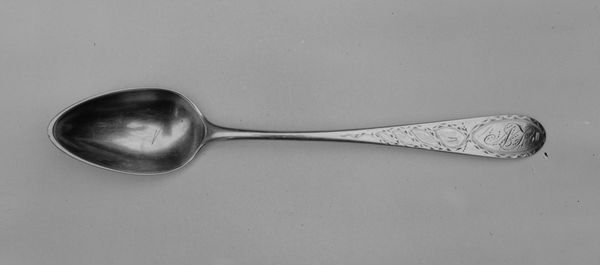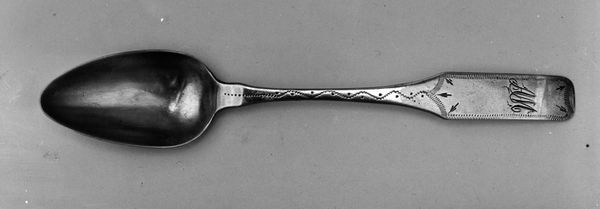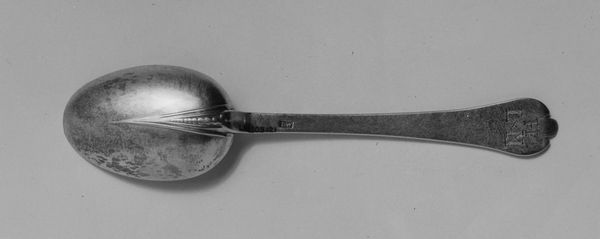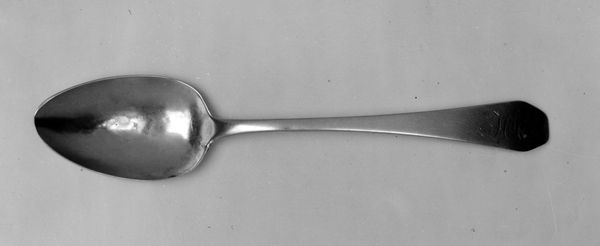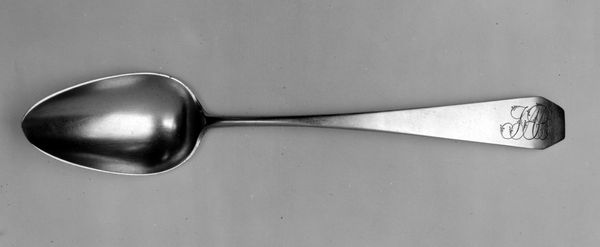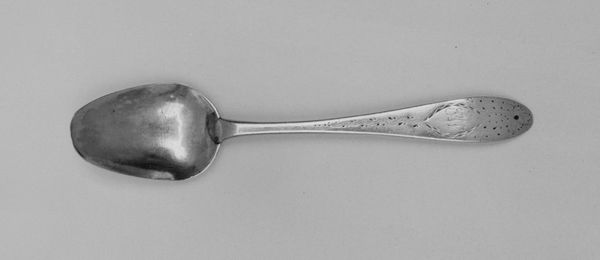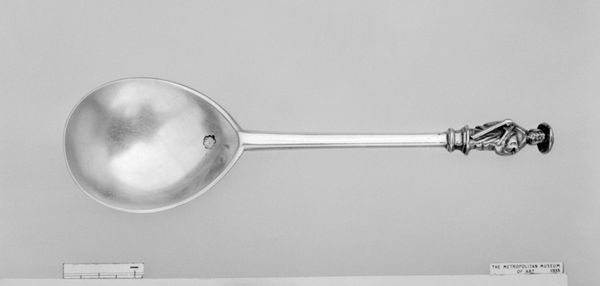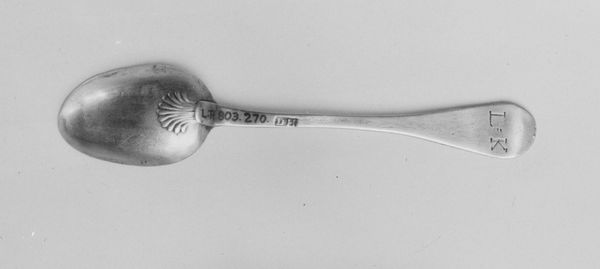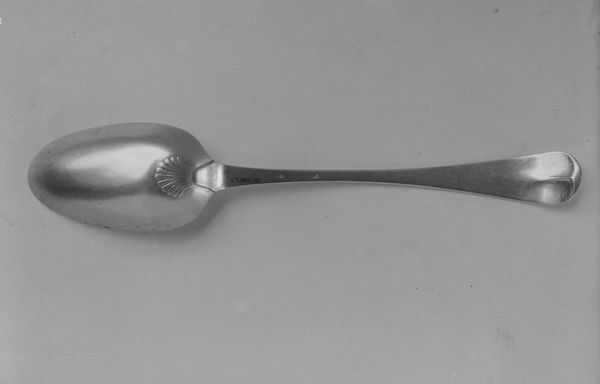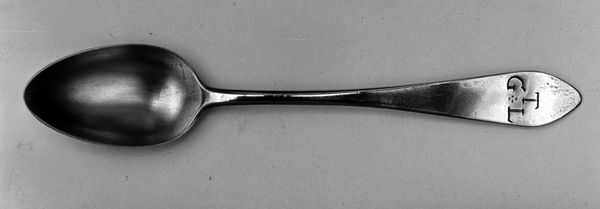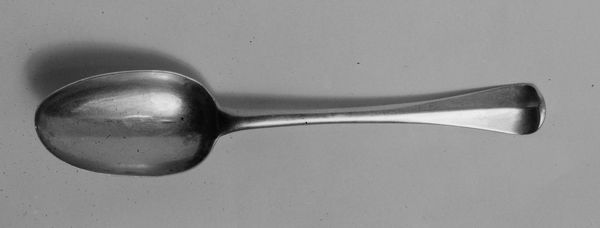
silver, metal
#
silver
#
metal
Dimensions: L. 8 3/4 in. (22.2 cm)
Copyright: Public Domain
Editor: This is "Spoon," crafted between 1765 and 1780 by Joseph Moulton. It’s a simple object, made from silver, and something about the sheen of the metal is appealing, despite its mundane purpose. What strikes you most about this piece? Curator: It's compelling to consider this spoon not just as a functional object but as a product of its time. Silver was a commodity, and its presence here speaks to a certain level of wealth and consumption in colonial America. Editor: So, it's not just about eating soup? Curator: Precisely. Consider the labor involved in extracting the silver, the artistry in shaping it, and the societal norms it reflects. Who would have used this? Was it for everyday use or special occasions? The maker, Joseph Moulton, his role in this production is critical. Was he free or enslaved labor? This one utensil can lead us to inquiries of labour, trade, and societal structures. Editor: That makes me look at it differently. I hadn't thought about the journey of the material itself, just its function. Curator: How does understanding its production shift your appreciation of its aesthetic qualities, or perhaps even challenge them? The symmetry, the elegant curve of the handle – were these purely aesthetic choices or were they driven by the properties of the material and the techniques used to shape it? Editor: I guess the beauty is intertwined with the economic and social context. The shell detail suddenly feels less like ornamentation and more like a display of skill and affluence. I'll definitely think more about material origins in future. Curator: And the skill needed to create such a refined object. Looking at something like this forces us to reflect on not just WHAT we consume, but HOW and from WHERE the materials arrive.
Comments
No comments
Be the first to comment and join the conversation on the ultimate creative platform.
